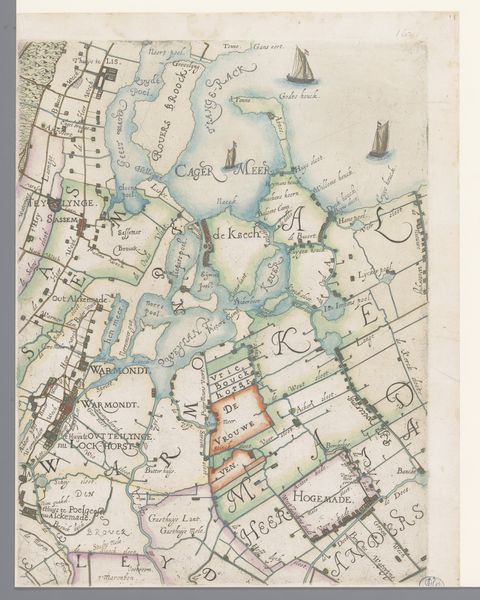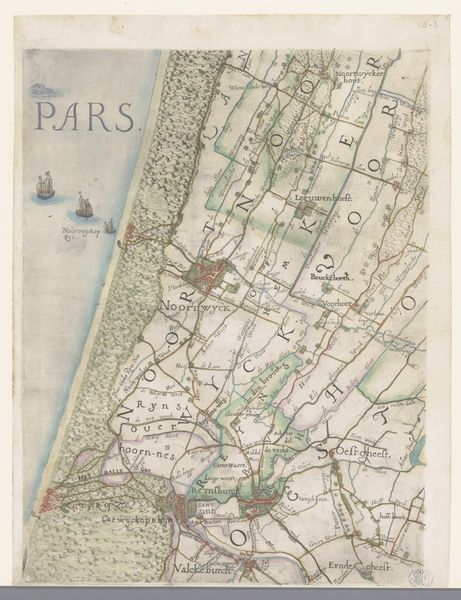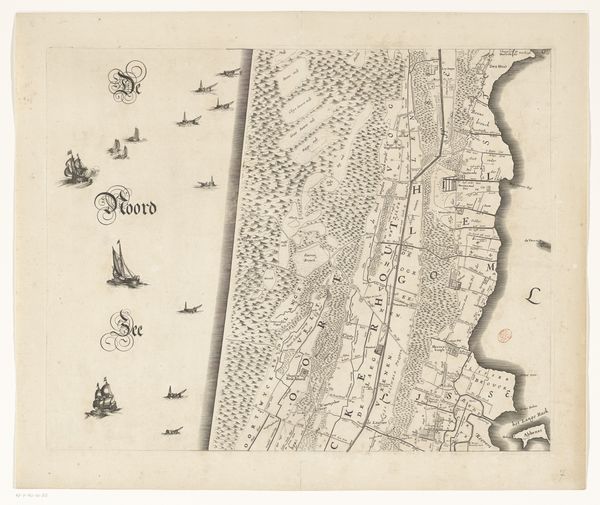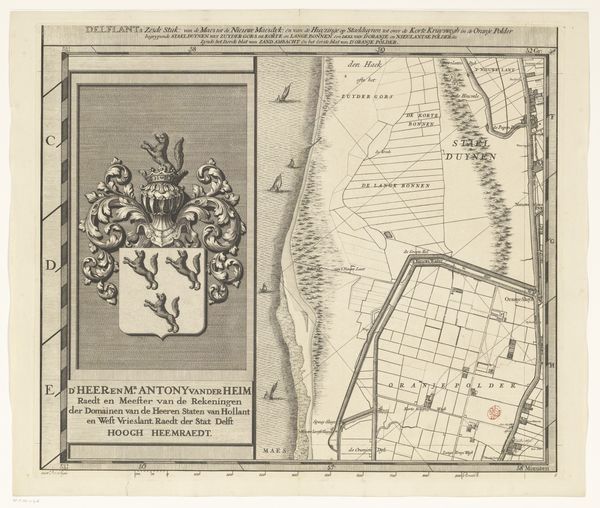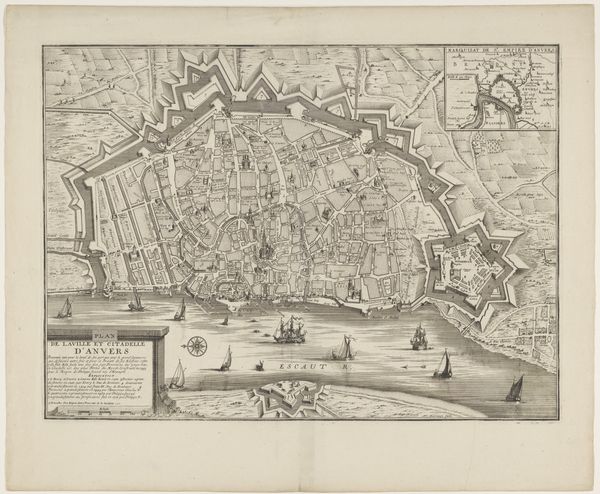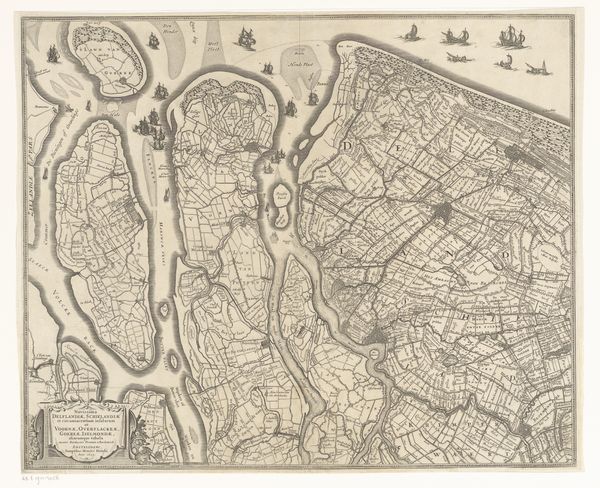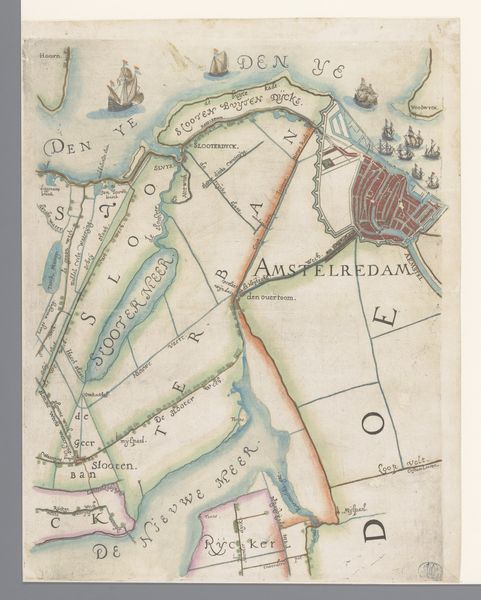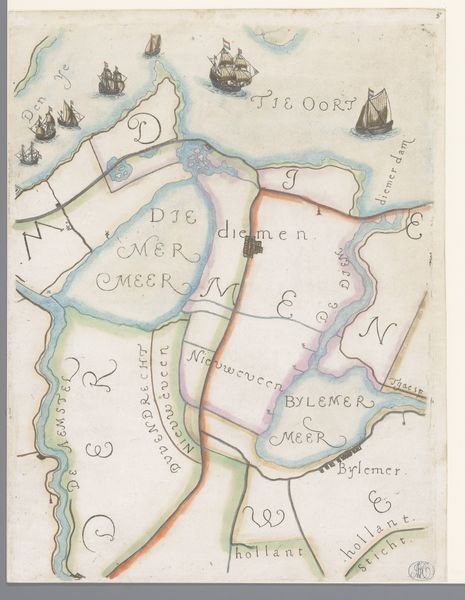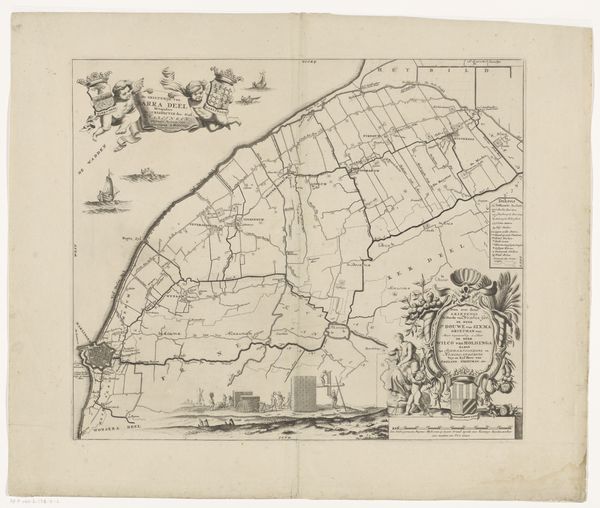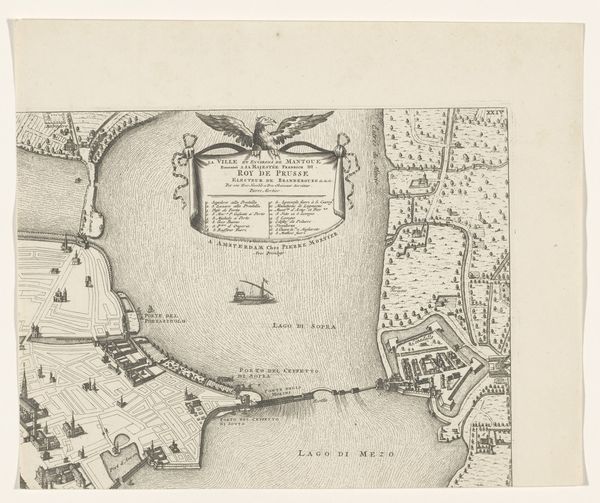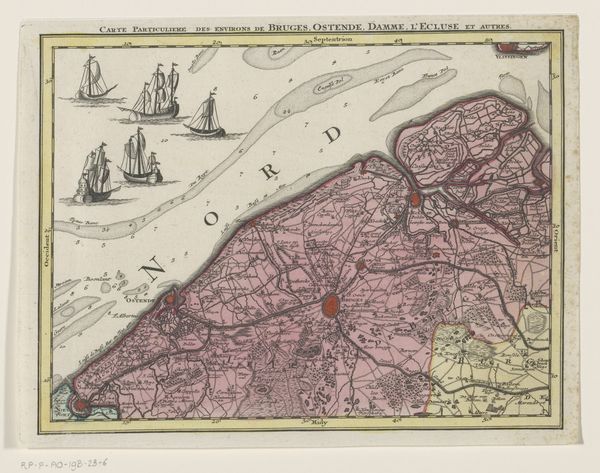
Deel van een kaart van het Hoogheemraadschap van Rijnland, met Hillegom en Lisse 1615
0:00
0:00
drawing, print, paper
#
drawing
# print
#
landscape
#
paper
#
geometric
Dimensions: height 371 mm, width 287 mm
Copyright: Rijks Museum: Open Domain
Curator: Let's turn our attention to this section of a map, "Deel van een kaart van het Hoogheemraadschap van Rijnland, met Hillegom en Lisse" by Floris Balthasarsz van Berckenrode, created in 1615. It’s a drawing and print on paper, showcasing landscape elements with geometric precision. Editor: Oh, this evokes a real sense of old-world exploration, doesn’t it? The delicate lines and faded colours… it’s like looking at a half-remembered dream of a place. Curator: Indeed. The meticulous rendering of the Rijnland water board highlights the essential nature of hydraulic engineering to this region's economy and, of course, society in general. It depicts land reclamation and control, demonstrating how humans were actively reshaping the environment. We see detailed property boundaries here. Editor: What strikes me is the strange serenity, almost poetic amidst this obviously very determined, deliberate reshaping. It's this blend of naturalism in its depiction of land and sea and imposed geometrical will in delineating districts that fascinates. Those tiny ships are beautiful against the backdrop of...well, intent. Curator: Absolutely. The map functions as both an aesthetic object and a practical tool. We can see how printmaking technology disseminated specific understandings of territory, enabling both governance and commerce. Notice how carefully each plot of land is differentiated by what's written on them. Editor: Looking closer, those miniature villages give a human scale to a macro endeavor. Can you imagine the effort to chart all that? There’s such intimacy, considering what its overall scope would achieve, even though some elements might have been off. It makes me wonder what Van Berckenrode hoped we might ultimately see or think about his work. Curator: He hoped for something accurate and lasting, no doubt. The very materiality speaks of long hours of work on the plates, multiple processes combining precision with artistic craft. Editor: I still come back to that blend. Precision melded with a sort of visual lyricism makes it so much more alive than I expected a land survey from that period to feel. It is both informative and, in its very being, reflective, which adds much weight and depth. Curator: An astute assessment, thank you.
Comments
No comments
Be the first to comment and join the conversation on the ultimate creative platform.
